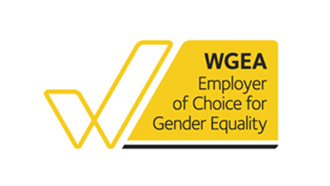- within Energy and Natural Resources topic(s)
- in United States
- within Energy and Natural Resources topic(s)
- in United States
- within Technology, Media, Telecoms, IT, Entertainment, Government and Public Sector topic(s)
- with Senior Company Executives, HR and Finance and Tax Executives
- with readers working within the Law Firm industries
As global demand for critical minerals intensifies, interest in deep sea mining is accelerating. For companies navigating the energy transition or operating across advanced manufacturing or technology supply chains, the ocean floor may represent a new frontier, and a matter of strategic consideration.
At the same time, deep sea mining is replete with complexity and subject to a quickly evolving set of legal, commercial and regulatory considerations that contractors and investors should keep in mind.
What is deep sea mining?
The seabed contains high concentrations of critical minerals including copper, cobalt, nickel, manganese and rare earth elements. Some estimates have put the amount of copper to be found in nodules sitting on the seabed of the Pacific equal to all known land-based copper deposits. These critical minerals are essential to batteries, renewable infrastructure and defence applications. In fact, batteries and renewable infrastructure often require significantly higher quantities of critical minerals than the combustion counterparts they are replacing. Unsurprisingly, therefore, the energy transition's forward-looking need for copper exceeds the aggregate of global copper consumption to date.
With demand for terrestrial supply continuing to rise, and geopolitical risks affecting traditional sources and supply chains, deep sea exploration is attracting increasing investment and policy attention. Even the original equipment manufacturers that have foresworn against using critical minerals obtained from deep sea mining are being confronted with the potential impact on future markets if competitors or essential upstream suppliers secure access to this vast source of commodities.
How is deep sea mining regulated?
Deep sea mining within a country's exclusive economic zone (EEZ) (200 nautical miles offshore) is covered by domestic laws. Japan, Norway, the Cook Islands, and now the US are all moving ahead in this area, modifying national mining laws or preparing bespoke deep sea mining laws, to access, or obtain revenue from, this set of resources.
Some countries have already issued domestic licences for exploration, creating first-mover opportunities for investors.
To date, Australia has not made any attempt to pave the way for deep sea mining in domestic waters, but any movement in this direction would include interaction with offshore environment and resource laws, Indigenous consultation and ESG scrutiny.
When deep sea mining moves to international waters, the regulatory issues become uniquely complex. When conducting exploration activities beyond national jurisdictions, companies must navigate a highly specialised regulatory environment governed by the United Nations Convention on the Law of the Sea (UNCLOS) and administered through the International Seabed Authority (ISA). The application of the international regime is further complicated by the fact that, while broad, its membership is not universal, with some economies like the US refusing to agree to binding obligations.
The ISA has issued over 30 exploration contracts, many of which have gone to Chinese, Russian, and Indian companies. The comprehensive legal framework and regulations that would allow for commercial exploitation licenses to be issued is now overdue, although legal challenges to force temporary approvals are periodically mooted.
Changes in US policy and new opportunities for investors
In April 2025, the US President signed an executive order titled Unleashing America's Offshore Critical Minerals and Resources, directing US agencies to expedite permitting processes for deep sea mineral exploration and recovery in both domestic and international waters. The order also instructs the US Department of Defense to assess the feasibility of adding seabed minerals to the national defence stockpile. The order aims to bolster domestic supply chains for critical minerals and reduce reliance on foreign sources.
The US is moving quickly, and has already issued two exploration licenses and one commercial recovery permit for deep sea mining operations in international waters. The US has also announced that it would begin evaluating a potential mineral lease sale in US territorial waters offshore American Samoa.
Critical minerals investors need to get ready
The shift in US policy presents several considerations for critical minerals investors:
- Domestic investment channels: The order
signals that US waters could soon be open for exploration,
providing new opportunities for investment partnerships,
early-stage equity, offtake agreements or technology
deployment.
- US-aligned partnerships: The US is not a party
to UNCLOS and only participates in the ISA as an observer.
Therefore, US firms seeking to invest in deep sea mining in
international waters may look to partner with eligible companies
and countries to facilitate obtaining ISA approvals in order to
operate in international waters with more legal certainty.
- Strategic support and incentives: By elevating
seabed minerals as a matter of national security, the US government
could introduce financing tools, tax incentives or development
guarantees for projects, especially those aligned with reshoring or
supply diversification goals.
- Geopolitical signalling: The US, China, Russia, India and Japan have all now made significant moves towards sourcing critical minerals through deep sea mining. This may accelerate timelines among other countries. It seems certain that deep sea minerals are likely to begin entering the supply chain in the medium future, which is likely to impact critical minerals supply, pricing and investments.
Key considerations for investors in this sector include:
- Licensing and project structuring:
Understanding how deep sea mining will be licensed, the authority
of a country or the ISA to issue those licences and ensuring the
project has been de-risked against legal and compliance
challenges.
- Bankability and risk allocation: Addressing
uncertainty in the absence of operational precedent, ensuring
contracts appropriately manage compliance responsibilities, provide
for an acceptable allocation of the technology risk, and contain
adequate dispute settlement mechanisms for these complex cross
border projects.
- ESG and stakeholder engagement: Navigating
scrutiny from NGOs, financial institutions, and institutional
investors.
- Strategic alignment: Evaluating how deep sea mining fits into long-term supply chain and industrial strategies, and how upstream suppliers and competitors are likely to align themselves.
In this quickly evolving area, investors should actively assess jurisdictional risks, continuously engage with the regulatory developments, and optimise ways to monitor opportunities, including through early-stage participation or small stake investing in direct investment, joint ventures, or offtake arrangements. Advice should be sought on the legal, commercial and regulatory considerations shaping the future of seabed mining such as licensing regimes, cross-border structuring of investments, ESG requirements, investment treaty protection to mitigate sovereign risk and government engagement strategies.
The content of this article is intended to provide a general guide to the subject matter. Specialist advice should be sought about your specific circumstances.
 |
 |
| Lawyers Weekly
Law firm of the year
2021 |
Employer of Choice for Gender Equality
(WGEA) |




